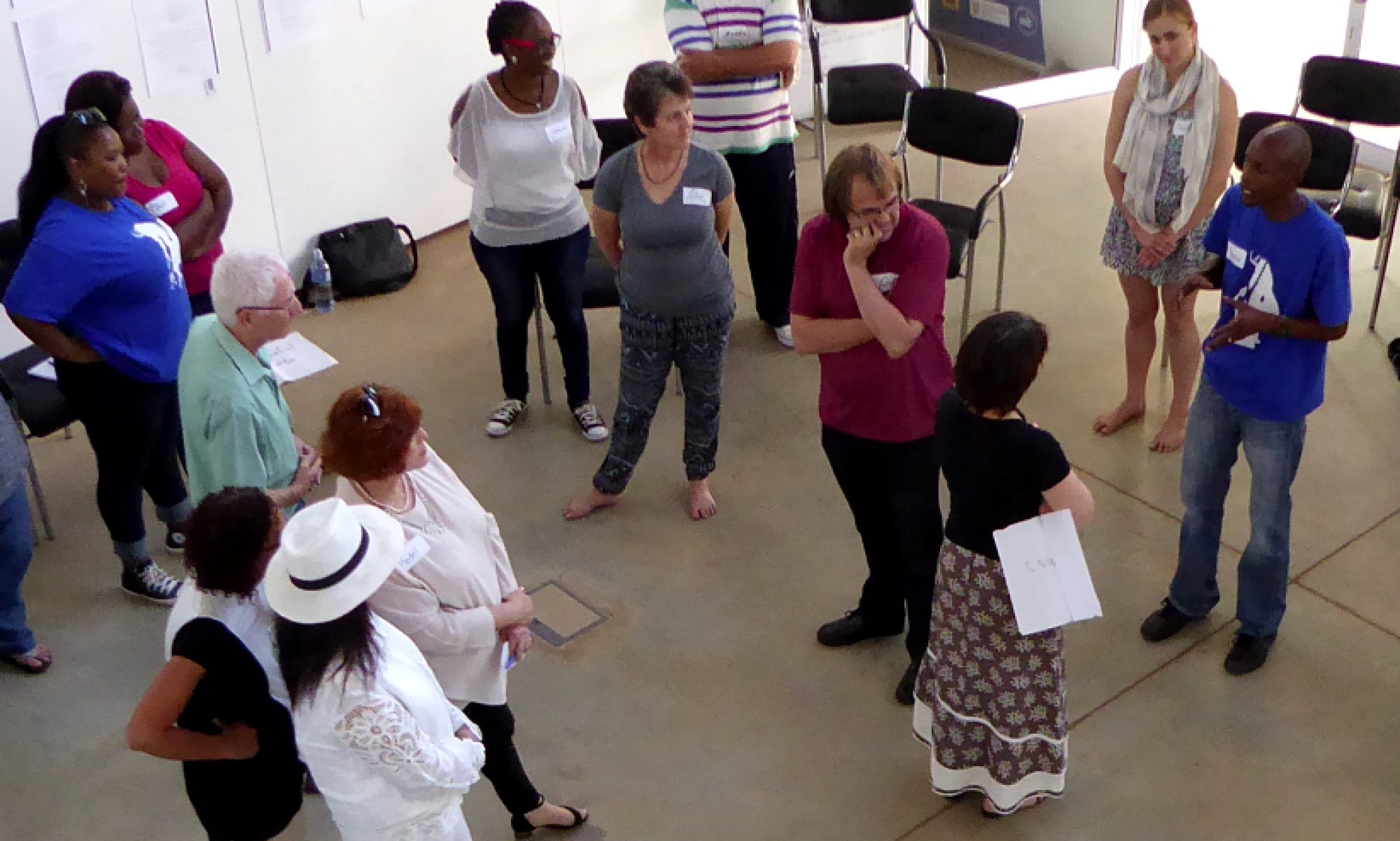Aligning with associates and clients with a shared set of values.
How many times have you experienced a values clash with a client or a fellow consultant when using applied performance techniques?
What you find here is a set of 7 values that had been work shopped with applied drama and applied improvisation practitioners who do work in organizational settings. Three different groups came together at three different occasions (two of them happened at our last Flying Pig sessions). We used a combination of embodied images, role play, conversation and systemic mapping to interrogate the meaning of each of these values sharing scenarios and stories to help us find the appropriate nuances. You are most welcome to comment, question and contribute to the conversation.
Playing Mantis and Associates Ethical guidelines
It is important to us that our associates and clients understand and resonate with our ethical approach and values. These can be articulated as follows:
1. Deep collaboration: We craft our work in deep collaboration with all stakeholders involved. We do not use the powerful tools of story and embodiment to ‘download’ information top down to participants. Rather, we create work that introduces ideas and then facilitate conversations to allow audience members to interrogate and make sense of those ideas for themselves. It is important to us to value the input of all stakeholders equally.
2. Sustainability of human relationships: Sustainability to us means that no process can be a fly by night affair. It requires relationship building, negotiation and development over time. We are deeply interested in the sustainability of the organisations that we support, which includes all of the human aspects of the employees and the wider stakeholder community that will inform the organisational culture.
3. Intersectional symbiosis: We support and enable leadership styles that seek to negotiate solutions between the organisation and the community, between management levels, between departments, sections and divisions, between leaders and workers, between skilled and unskilled labour so that all impacted parties benefit. This means that all parties also have to be willing to adapt and rework solutions based on intersectional input.
4. Intrinsic value and contribution: We support the notion that every individual and every social grouping has value and can contribute positively to the workings of an organisation and its health. This means that every person working in an organisation, and also the community outside the organisation that supports the individuals, have value and can contribute something unique to the organisation that the leaders may not be aware of at the outset. We work to surface and incorporate these in all the work we do.
5. Systemic awareness: We support the notion that every issue must be considered in relation to larger systemic influences and conditions. These include social, environmental, political, historical, strategic, legal and technological factors that may or may not be visible and recognised by stakeholders at the outset. We work to surface and acknowledge the effects of these in all the work we do.
6. Rigorous self reflexivity: We hold ourselves and everyone we work with accountable to honour their responsibilities and agreements they make. We train and support everyone involved in our projects to be self reflexive and able to see and consider their own perspectives and positioning in relation to those of the other stakeholders so that prejudice, egoism, nepotism, domination and corruption are never an option.
7. Responsible sharing of intellectual contributions: We value our intellectual property and yours. It is our livelihood. At the same time we want you to be able to use what you receive through interaction with our work and integrate it into your own. We also want others to find their way to the materials and use it. We therefore ask you to reference our work wherever possible in written or oral format if you use it explicitly or if your own work was adapted from ours. In all these cases please reference us as follows:
– State the nature of our influence e.g. taken from / inspired by / adapted from
– State the author or entity e.g. Playing Mantis People development Consultants / Petro Janse van Vuuren
– State the specific model/ tool /idea e.g. the SNE model / Moving Story Structure / Pig Catching process etc.
Examples:
“Inspired by Petro Janse van Vuuren’s SNE model.”
“Taken from Playing Mantis’s Moving Story Structure”










